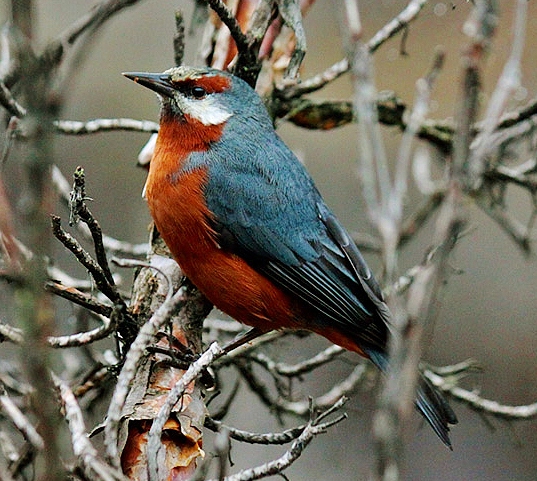 |
| Photo by Sam Woods (Surf Birds) |
Common name:
giant conebill (en); figuinha-gigante (pt); conirostre géant (fr); pájaro de los queñuales(es); riesenspitzschnabel (de)
Taxonomy:
Order Passeriformes
Family Thraupidae
Range:
This South American species is found in the central and northern Andes, in southern Colombia, Ecuador, Peru and Bolivia.
Size:
These birds are 15 cm long and weigh 22-27 g.
Habitat:
The Giant Conebill is restricted to Polylepis woodlands, a high-elevation forest type that occurs above cloud level, at altitudes of 2.700-4.850 m.
Diet:
They are mainly insectivorous, eating caterpillars, beetles, small moth and aphids, but are known to probe the flowers of epiphytic mistletoes for nectar.
Breeding:
Giant conebills breed in October-December. The nest is an open cup made of twigs and sticks of Polylepis interwoven with soft plant material, and lined with moss, thin strips of Polylepis bark, feathers and sheep wool. The nest is placed within dense foliage, 2-3 m above the ground. The female lays 1-3 white eggs with brown specks, which are incubated by both parents. There is no information regarding the incubation period, but the chicks are known to be fed by both parents and fledge 14-16 days after hatching.
Conservation:
IUCN status – NT (Near-Threatened)
This species has a relatively large but patchy breeding range. The global population size has not been quantified, but the giant conebill is described as uncommon and patchily distributed. The population is suspected to be undergoing a moderate decline owing to the destruction and fragmentation of Polylepis woodlands as a result of uncontrolled use of fire, firewood collection, intense grazing by cattle, unsound agricultural techniques and afforestation with exotic tree species.







